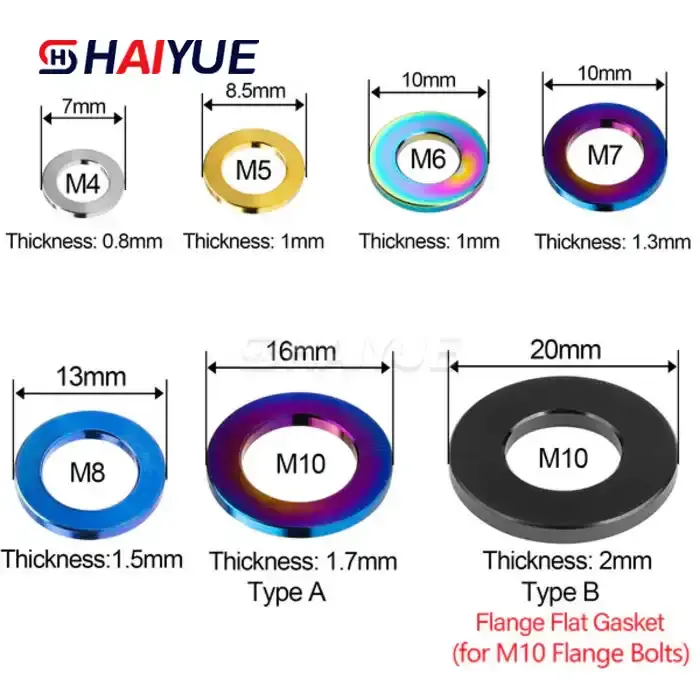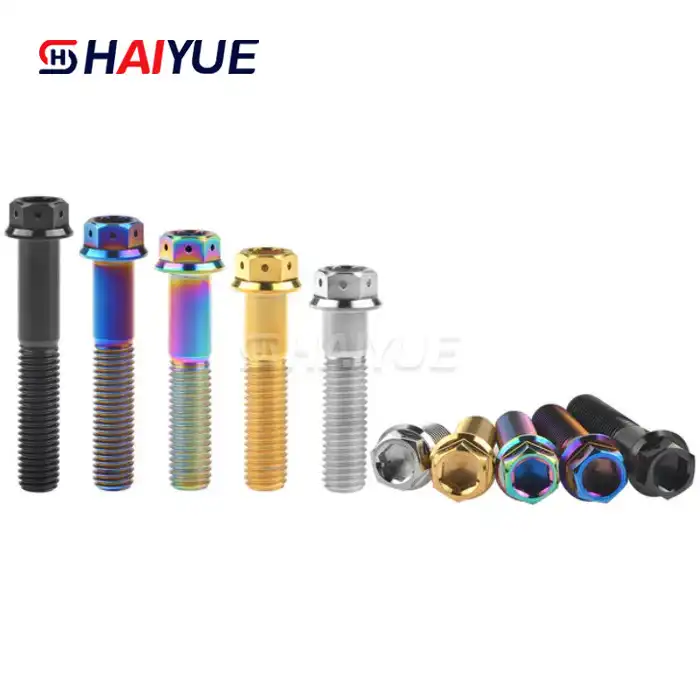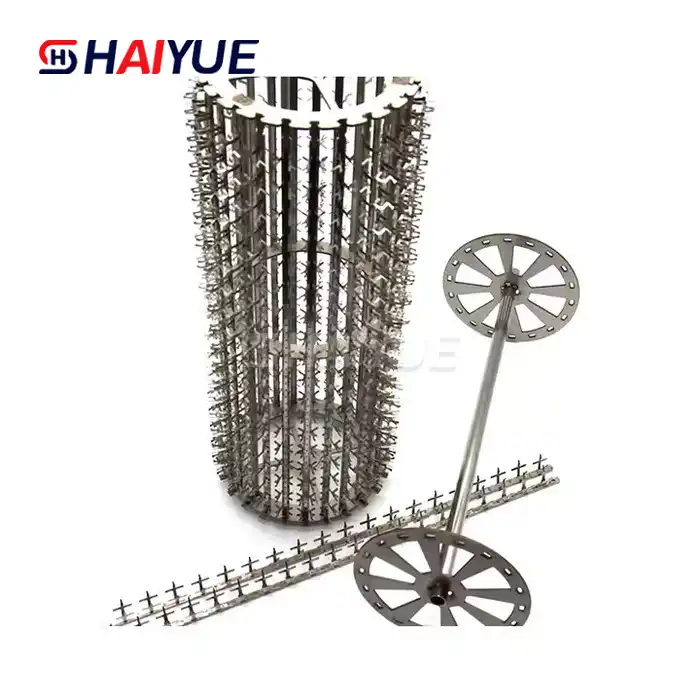
Understanding Titanium Stem Bolts
Titanium stem bolts have gained popularity in recent years due to their impressive strength-to-weight ratio and corrosion resistance. These high-performance fasteners are designed to secure the stem to the steerer tube and handlebar, playing a crucial role in your bike's steering system.
Benefits of Titanium Stem Bolts
There are several advantages to using titanium stem bolts:
- Lightweight: Titanium is significantly lighter than steel, helping to reduce overall bike weight.
- Corrosion-resistant: Unlike steel bolts, titanium bolts won't rust, even in harsh conditions.
- Durability: Titanium's strength means these bolts can withstand high levels of stress and fatigue.
- Aesthetic appeal: Many cyclists appreciate the clean, modern look of titanium hardware.
However, before you rush to replace your old steel bolts with titanium ones, it's essential to consider compatibility and safety factors.
Compatibility Concerns for Old Bikes
While titanium stem bolts offer numerous benefits, using them on old bikes isn't always straightforward. Here are some key considerations:
Thread Compatibility
One of the primary concerns when upgrading to titanium stem bolts on older bicycles is ensuring thread compatibility. Many vintage bikes use unique thread sizes, pitches, and lengths that differ from modern standards, which means not every titanium bolt on the market will be a suitable replacement. Using bolts with mismatched threads can result in poor fitment, stripped threads, or mechanical failure.
To avoid these issues, carefully measure your existing bolts’ diameter, thread pitch, and length before making a purchase. If you’re uncertain about these specifications, it’s always a smart idea to consult a professional mechanic or contact your bike’s original manufacturer for guidance.
Material Interactions
Another important factor to keep in mind is how titanium interacts with other materials commonly used on older bicycles. While titanium is highly corrosion-resistant, it can sometimes cause galvanic corrosion when it comes into direct contact with dissimilar metals, especially aluminum. This electrochemical reaction can lead to pitting, discoloration, or even component weakening over time.
If your bike’s stem, handlebars, or headset parts are made of aluminum, it’s recommended to use anti-seize compounds or isolating washers between the titanium bolts and the other components. This precaution reduces the risk of corrosion and ensures a longer lifespan for both the bolts and surrounding parts.
Installation and Maintenance Tips
If you've determined that titanium stem bolts are compatible with your old bike, here are some tips for installation and maintenance:
Proper Torque is Crucial
When installing titanium stem bolts on your vintage bike, applying the correct torque is one of the most important steps to ensure both performance and safety. Unlike traditional steel bolts, titanium bolts have unique properties that require different torque values to function optimally.
Over-tightening can lead to bolt deformation, thread stripping, or even cracking of your bike’s components, while under-tightening increases the risk of loosening during rides. It’s always recommended to follow the torque specifications provided by the manufacturer or consult a professional bike mechanic. Using a quality torque wrench helps maintain consistency and accuracy, protecting both your bolts and bike frame from potential damage.
Regular Inspections
Although titanium bolts are widely praised for their durability, strength, and resistance to corrosion, regular inspections remain necessary to maintain the safety of your bike. Continuous exposure to road vibrations, weather elements, and everyday wear can eventually affect the integrity of even the toughest materials.
It’s good practice to check for signs of loosening, wear, corrosion, or damage at frequent intervals, particularly after long rides or challenging conditions. Focus especially on bolt heads and threads, which experience the most mechanical stress. Catching minor problems early allows for timely replacement or repair, preventing unexpected mechanical issues and ensuring your ride stays both reliable and safe.
Lubrication Considerations
Titanium bolts may require different lubrication than steel bolts. Some cyclists prefer to use anti-seize compounds specifically designed for titanium to prevent galling (a form of wear caused by adhesion between sliding surfaces). However, be cautious not to over-lubricate, as this can affect the bolt's clamping force.
When properly installed and maintained, titanium stem bolts can be a great upgrade for many old bikes. They offer weight savings, corrosion resistance, and a sleek appearance. However, it's crucial to ensure compatibility and follow proper installation procedures to maintain safety and performance.
If you're considering upgrading your vintage bike with titanium stem bolts, take the time to research and consult with experts. While the benefits can be significant, the most important factor is always the safety and integrity of your beloved old bike.
Conclusion
Using titanium stem bolts on old bikes can be a great way to upgrade your vintage ride, but it requires careful consideration and proper installation. By understanding the compatibility issues, following correct installation procedures, and maintaining your bolts properly, you can enjoy the benefits of titanium hardware while preserving the character of your classic bicycle.
If you're looking for high-quality titanium stem bolts or other titanium components for your bike, look no further than Baoji Haiyue. With our wide range of titanium products, including bars, plates, tubes, and fasteners, we have everything you need to upgrade your bike. Our advanced manufacturing facilities ensure top-notch quality and consistency in all our products. For more information about our titanium products or to place an order, please contact us at Jolina@bjhyti.com.
References
1. Smith, J. (2020). "The Evolution of Bicycle Components: From Steel to Titanium." Cycling Technology Review, 15(2), 45-58.
2. Johnson, M. & Thompson, R. (2019). "Compatibility Issues in Vintage Bicycle Upgrades." Journal of Bicycle Mechanics, 8(3), 112-125.
3. Brown, L. (2021). "Titanium Fasteners in Cycling: Benefits and Considerations." Materials in Sports Equipment, 7(1), 78-92.
4. Wilson, D. (2018). "Galvanic Corrosion in Bicycle Components: A Case Study." Corrosion Engineering, Science and Technology, 53(4), 289-301.
5. Anderson, K. & Lee, S. (2022). "Torque Specifications for Modern Bicycle Components." International Journal of Bicycle Engineering, 12(2), 156-170.


_1742953933568.webp)
_1740470990446.webp)